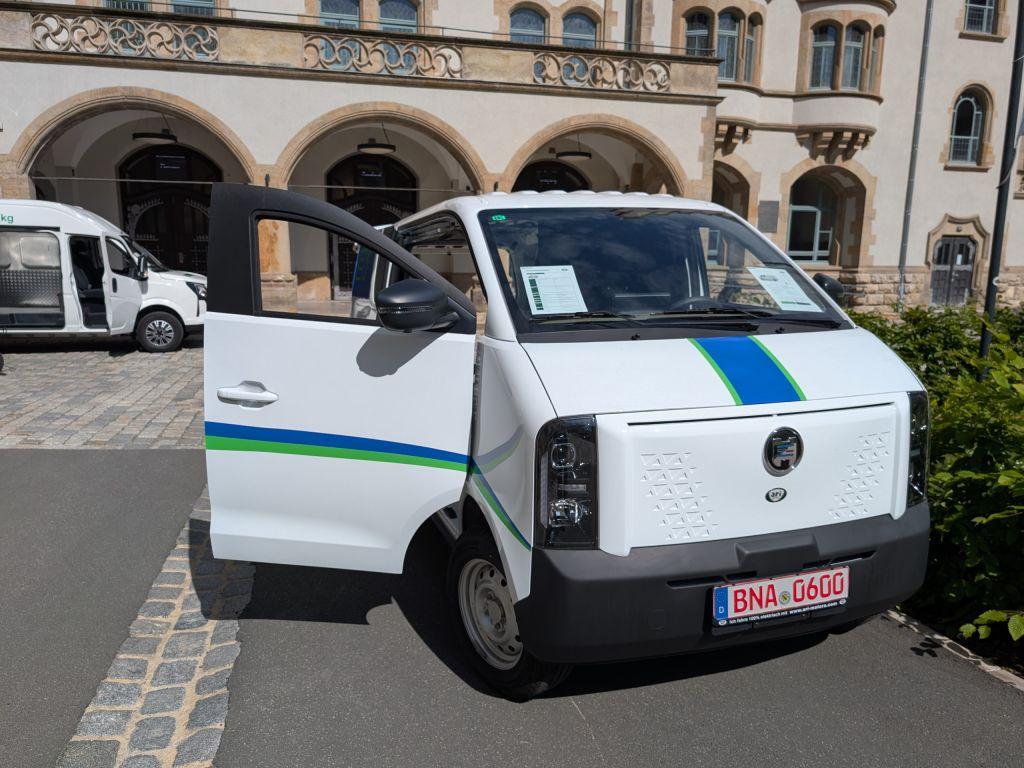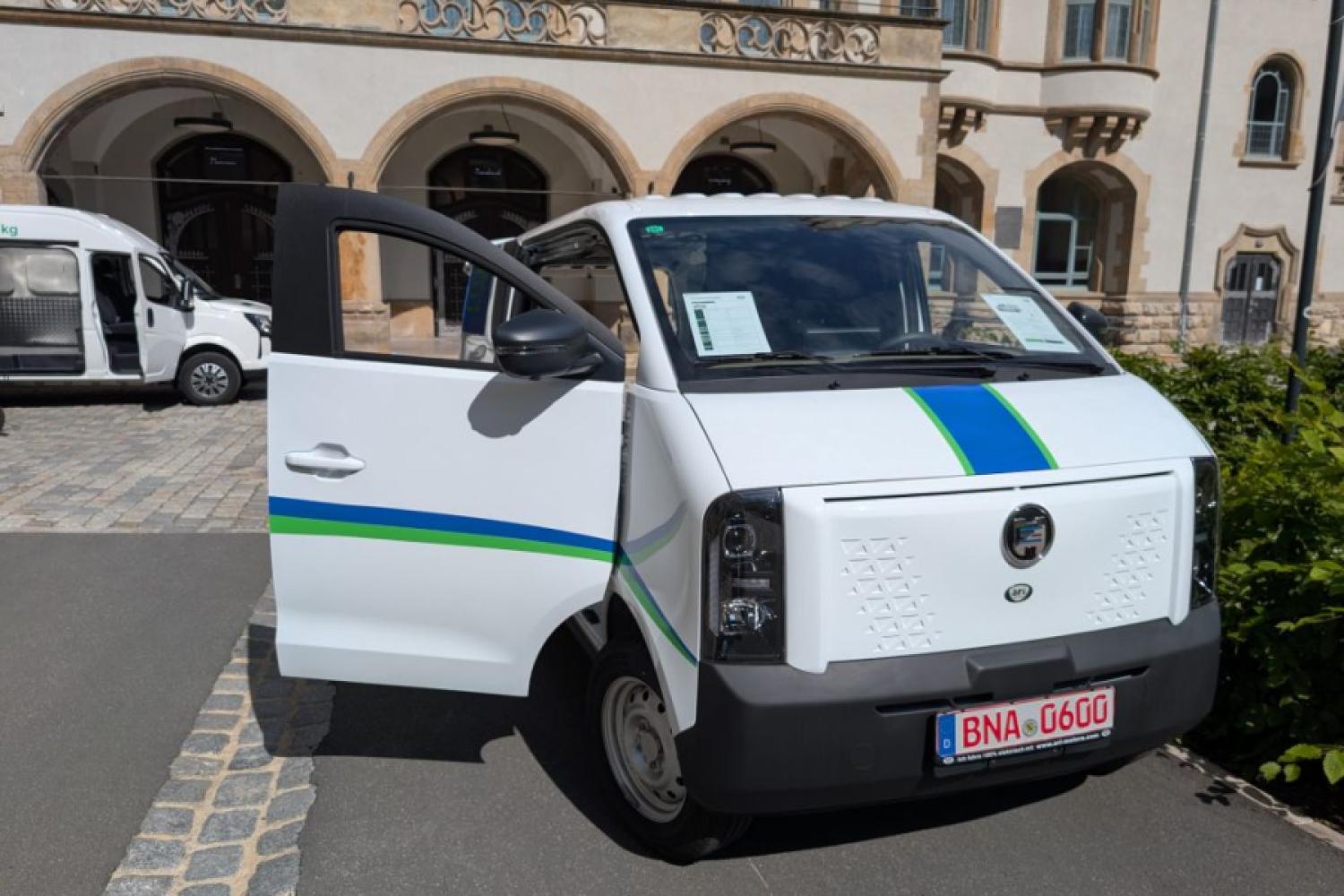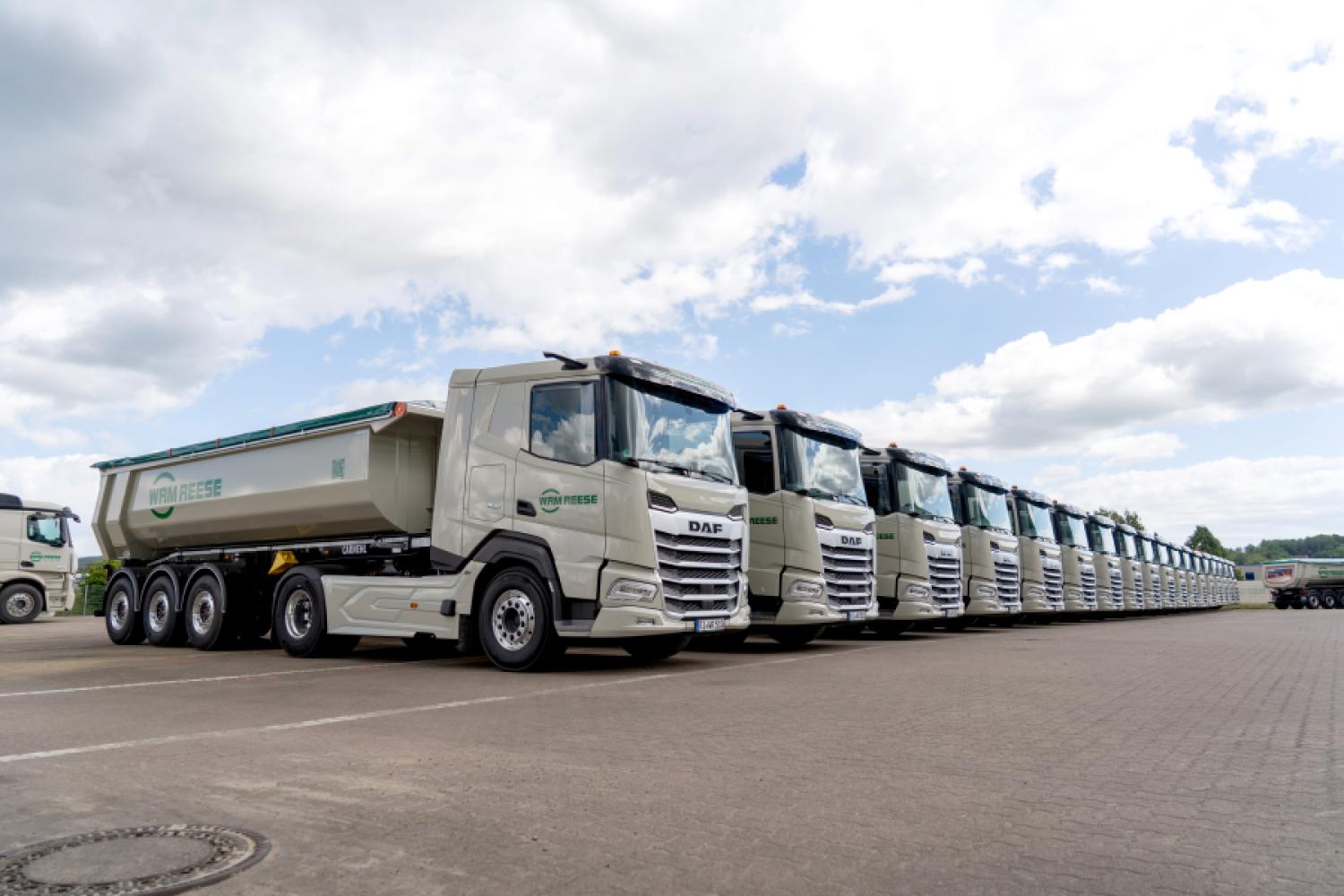The products can't be the issue: Ari CEO Thomas Kuwatsch doesn't beat around the bush; he simply doesn't understand the significant purchase reluctance and electric skepticism of the Teutons. The Leipzig-based company draws from the enormous range of Chinese manufacturers and adapts the vehicles for Europe at an almost unbeatable price, with good quality. The latest catch from the Middle Kingdom: The Ari 901 XL, an E-van with dedicated urban profiling. Unlike the combustion engine-derived Ari 1710, a Dongfeng V5, the transporter is based on a pure electric platform. This is evident during the brief inspection at the Smart City Logistics Congress in Jena.
Ultra-short flat nose, long wheelbase, high space efficiency, spacious cabin. After all, the 60 kW permanent synchronous motor on the rear axle takes up hardly any space. And the moderate but for the purposes entirely adequately dimensioned 42-kWh lithium iron phosphate battery from battery giant CATL easily disappears into the underbody. It promises a range of 301 kilometers, which seems realistic with a consumption of 14.9 kWh/100 km, verifiable in the first test round. Charging is done in AC-Type 2 and DC-CCS, filling the battery in six hours with AC and in one hour with DC.
The setup is
already fitting. But the cream of the 901 XL is the cargo space: it offers 6.3 cubic meters over the length of a Caddy Maxi at 4.86 meters, measuring a slim 1.75 meters and remaining underground garage-worthy at 1.99 meters. The small battery has several advantages: Besides the favorable price, with the 901 starting pretty much fully equipped from a net 32,990 euros or 614 euros leasing, it gives the E-Van a hefty payload of 1,375 kilograms, thanks to an almost ascetically low curb weight of 1.5 tons for a BEV. This is complemented by a decent towing capacity of 1,200 kg.
Side opening without B-pillar
The highlight is certainly the B-pillar-free side access, which makes loading bulky goods significantly easier. Additionally, the manufacturer from China, which Thomas Kuwatsch does not want to fully disclose, has provided a generous recess on the passenger side, which allows the loading length to stretch from 2.83 meters to 4.10 meters when folding down the passenger seat and loading the unfortunately not very robust backside. Incidentally, thanks to the flat floor, entry is easy.
The width is also decent at 1.63 meters, as is the interior height of 1.39 meters, suggesting a low loading edge, in contrast
to the combustion-based 1710 with its extremely high cargo area. However, at the rear, one would wish for a swing door instead of the flap, but to compensate, there is the wide side.
On the road, another advantage of the pure E-basis is quickly evident; it fronts on McPherson and uses a classic-simple but robust rigid axle at the rear: The turning circle is extremely compact at just under eight meters, allowing effortless navigation through Jena's city center. Take-off from the traffic light is swift, the motor hums cheerfully along without becoming intrusive, quite unlike the loud, sometimes even booming, brushless unit in the 1710. A single-stage recuperation often eliminates the need for braking, when necessary, front discs and rear drums provide sufficient deceleration. Anachronistic in view of the electric base are the foot parking brake like in the old Mercedes Vito and the "ignition key," but those are minor gripes.
Rather robust chassis and handling
In terms of chassis, the 901 falls short of the finesse of European or Korean E-vans. The steering is light but devoid of feel, the suspension leans more towards the "honest" side, the body is not the stiffest, and driving fun doesn’t necessarily come into play. But
you manage and quickly recognize the 901 as an affordable, uncomplicated "tool" for freight transport. The maximum speed of 100 km/h is entirely sufficient, especially since the wind and rolling noises become annoyingly loud at that point. The two digital displays provide the necessary information on the favorable consumption, and there is a reversing camera in the central display. Bluetooth, hands-free system, central locking, and heating are on board; only the air conditioning is extra. Optional extras include a roof rack or a solar panel for supporting electrical consumers. There are plenty of well-shaped storage spaces, and the materials and workmanship could be described as pragmatic; the seats are reasonably comfortable for short distances.
Overall, the 901 XL is a pragmatist that offers the sober capacities of a VW eTransporter or Ford E-Transit Custom at a low price. Of course, the competition in the Far East isn't sleeping: The new Kia PV5 was recently introduced - and also starts from 33,000 euros net, but technically it is of course at a significantly higher level with 4.4 cubic meters in the base. Nevertheless, if you’re looking for an affordable E-van for urban transport, you’ll also find it in Leipzig/Borna. As stated, the electric skepticism






